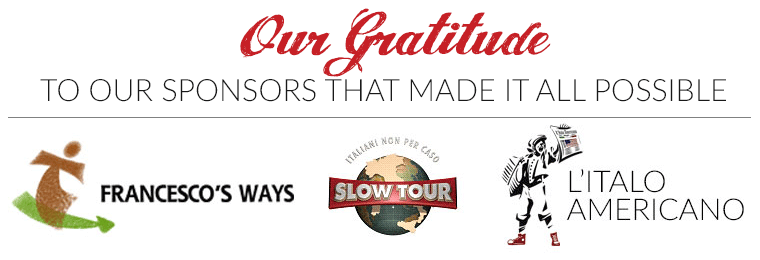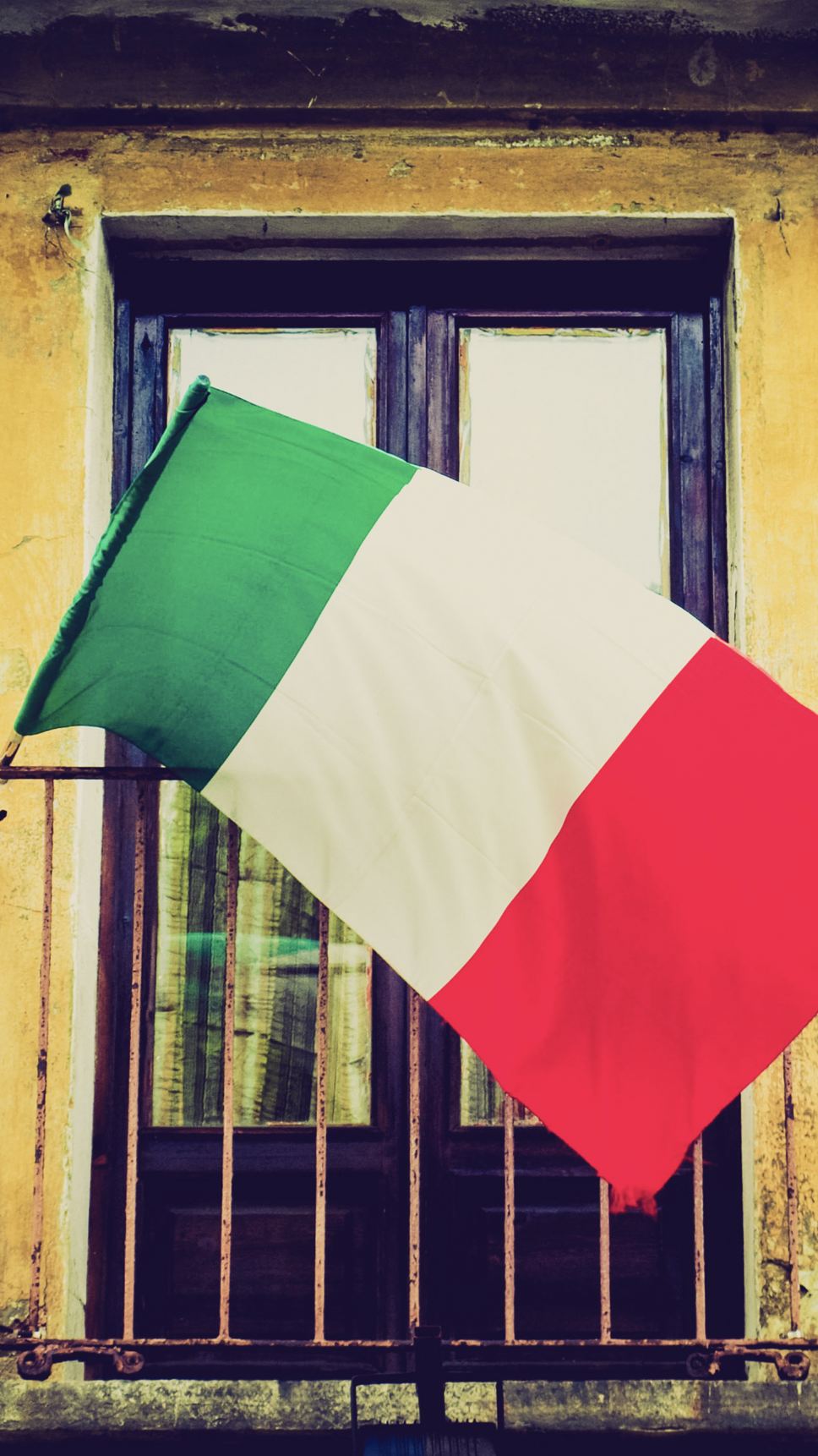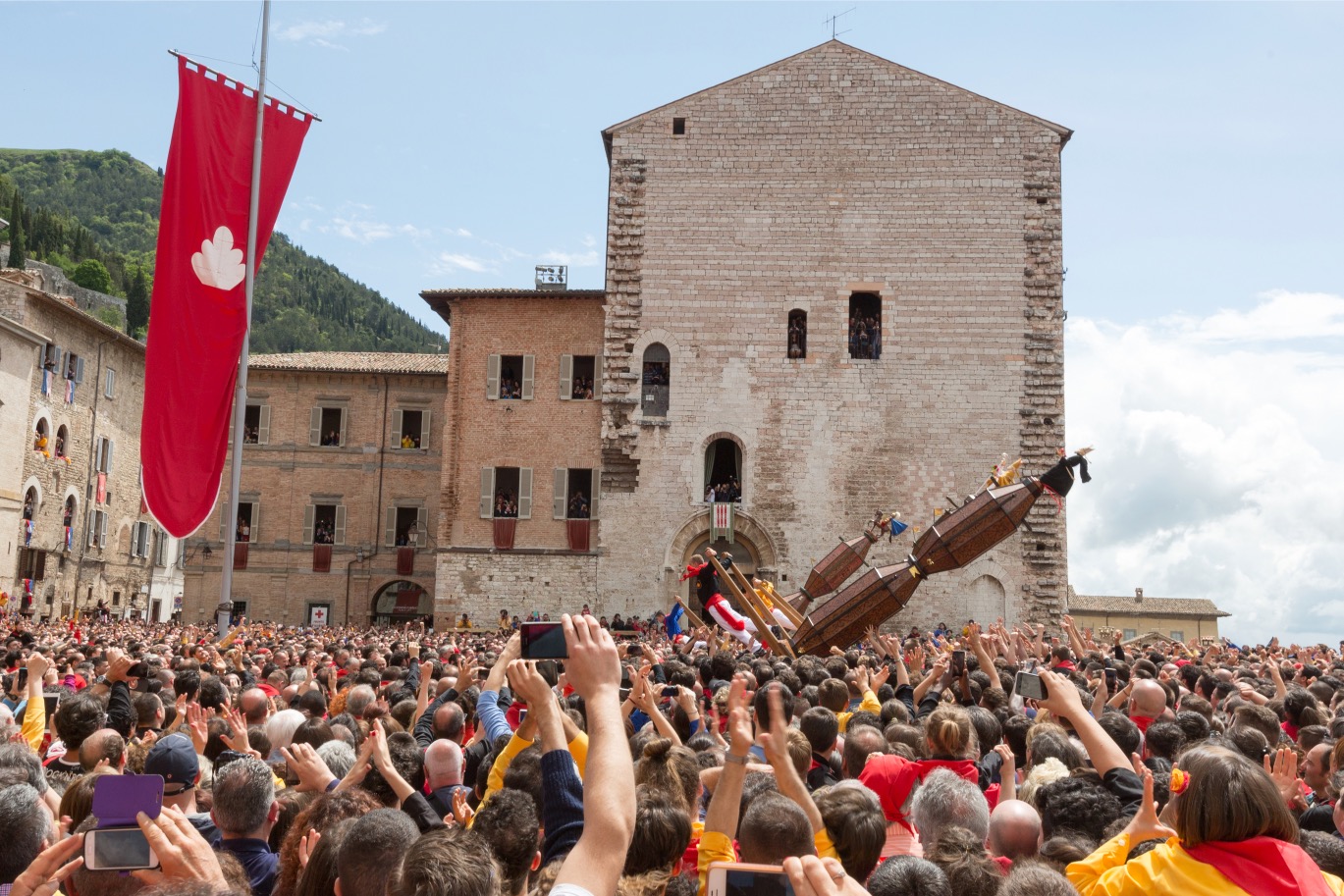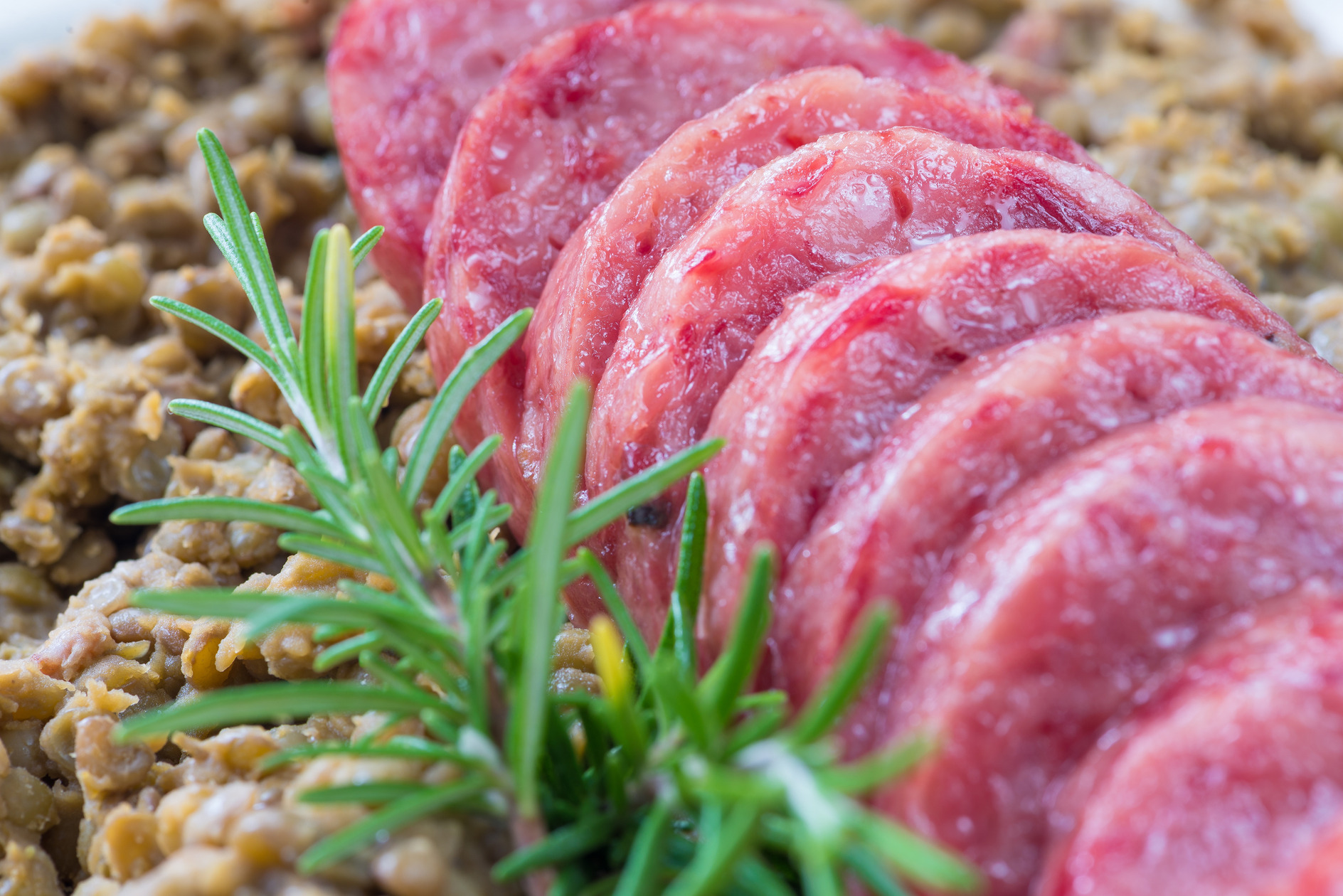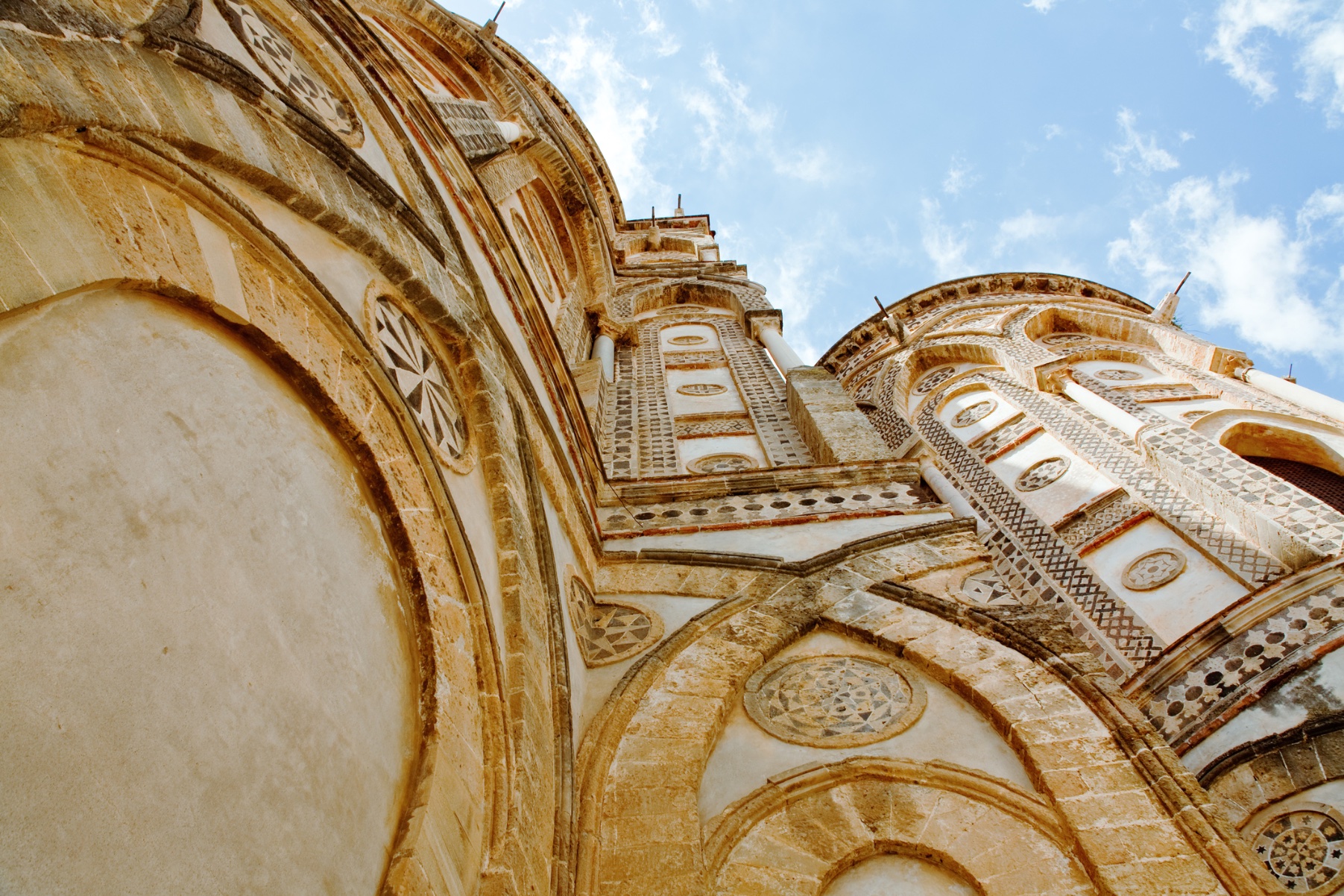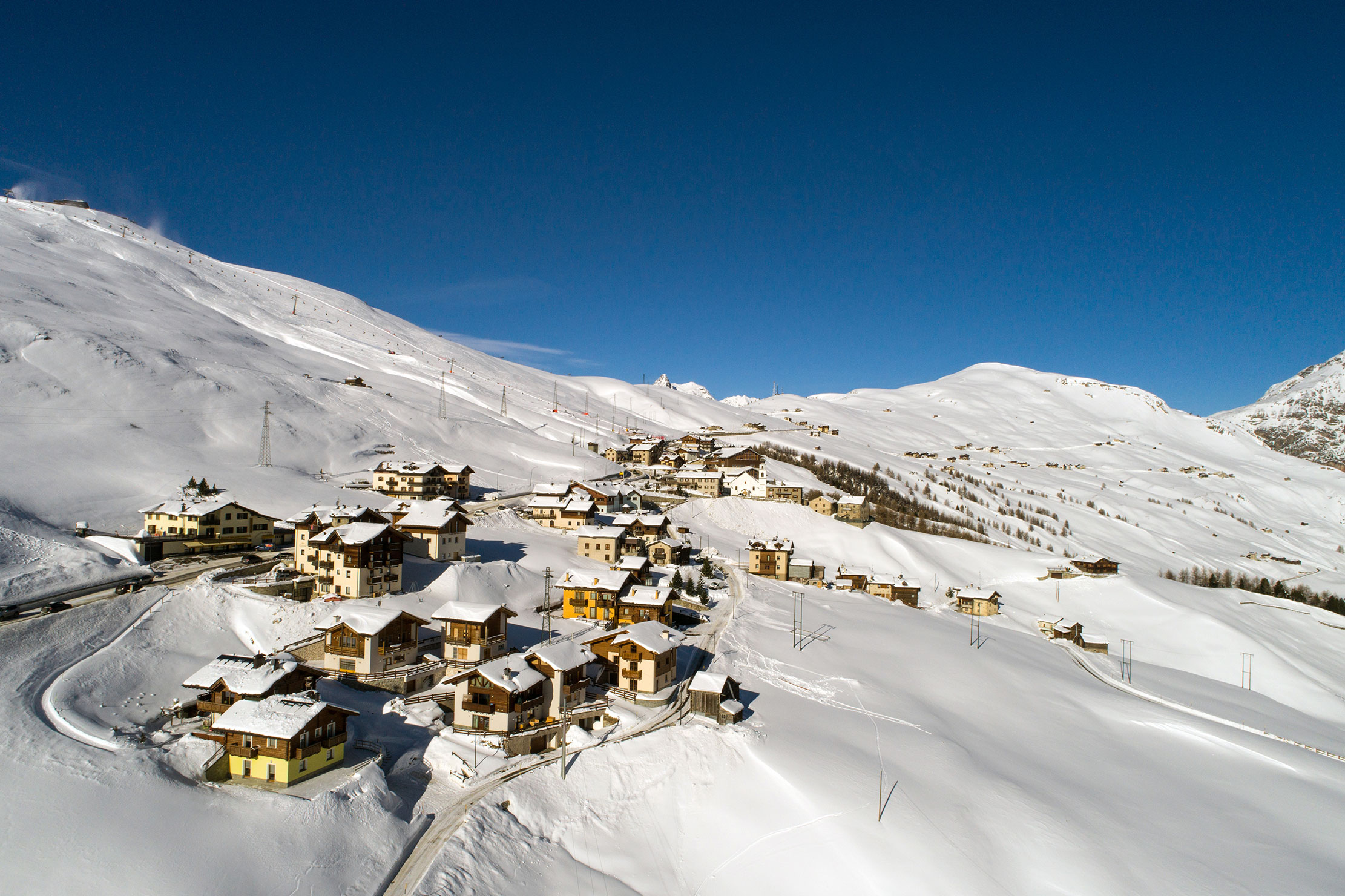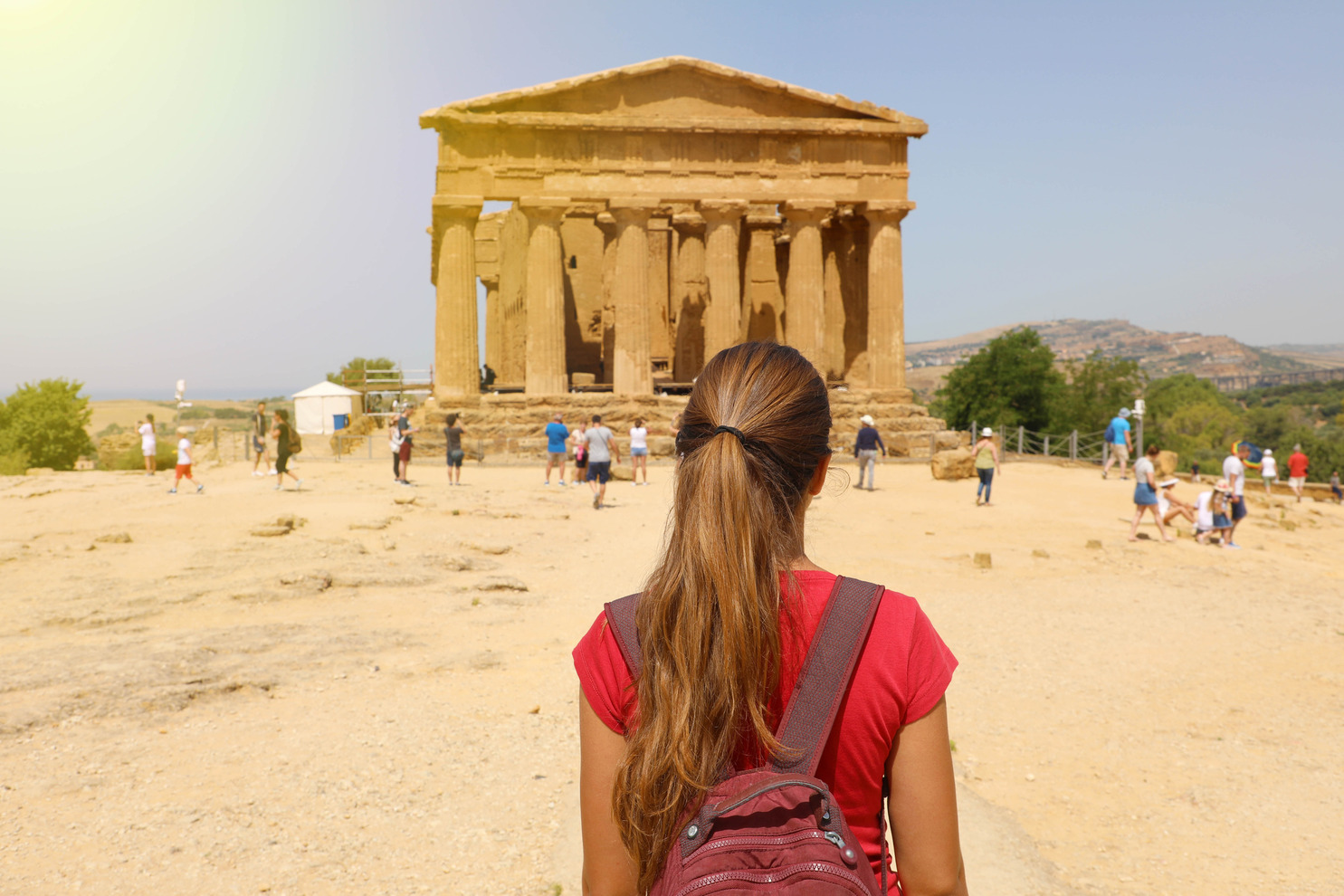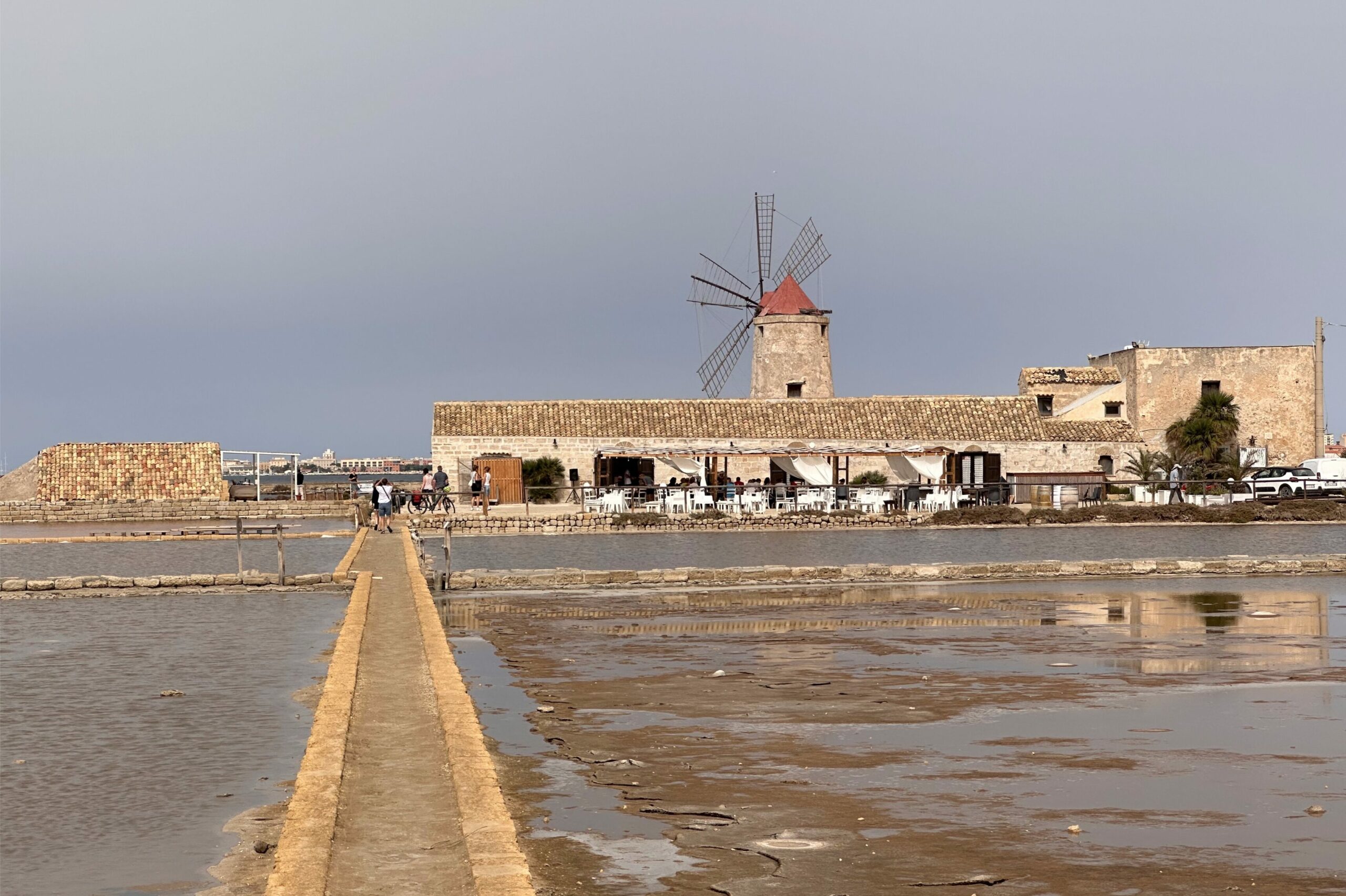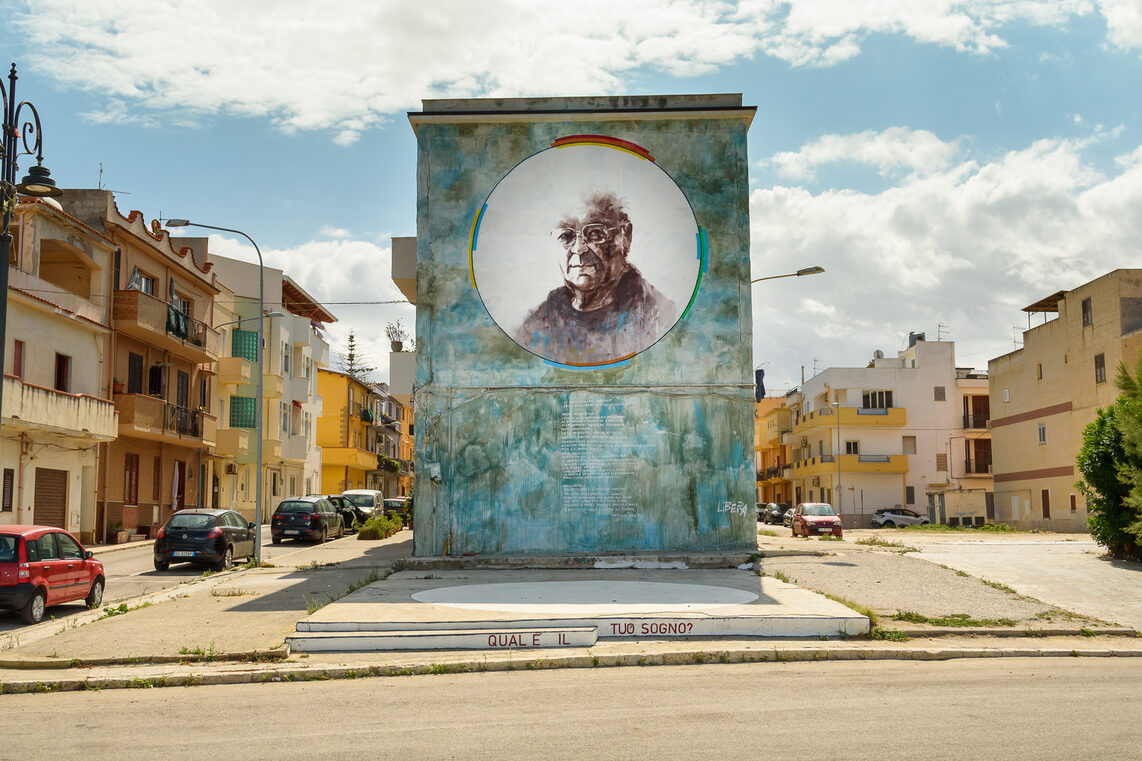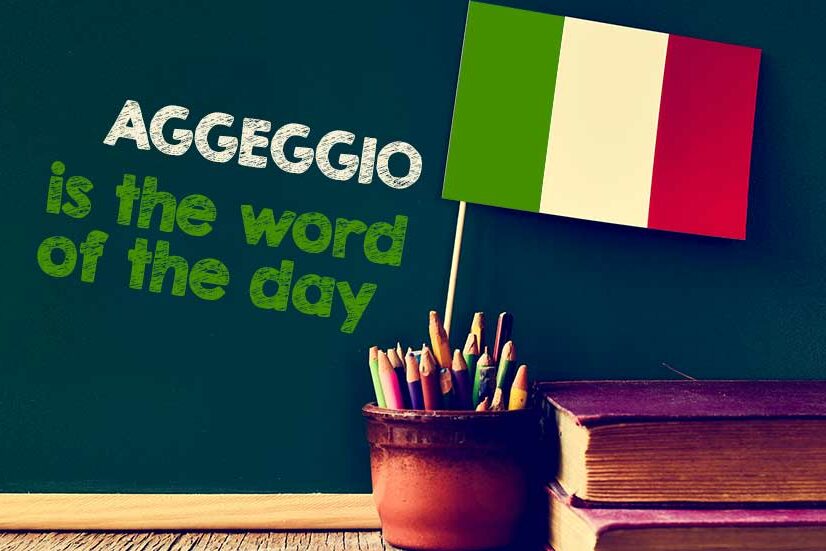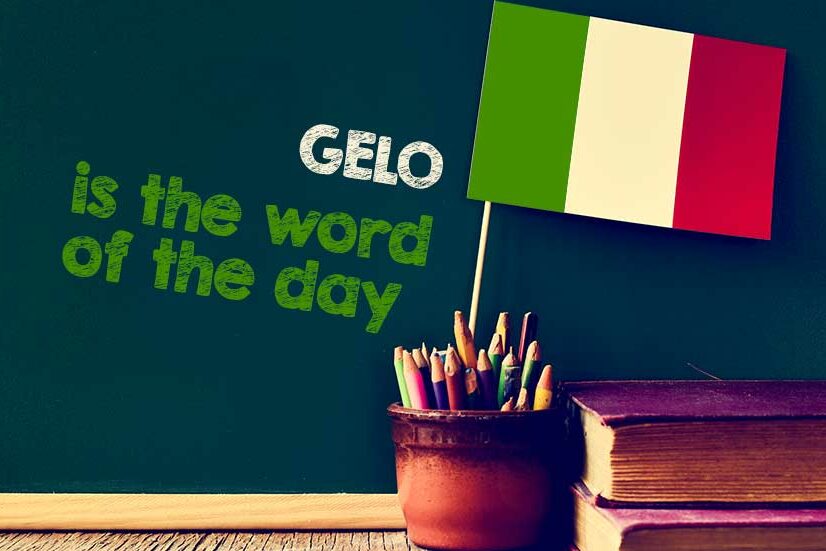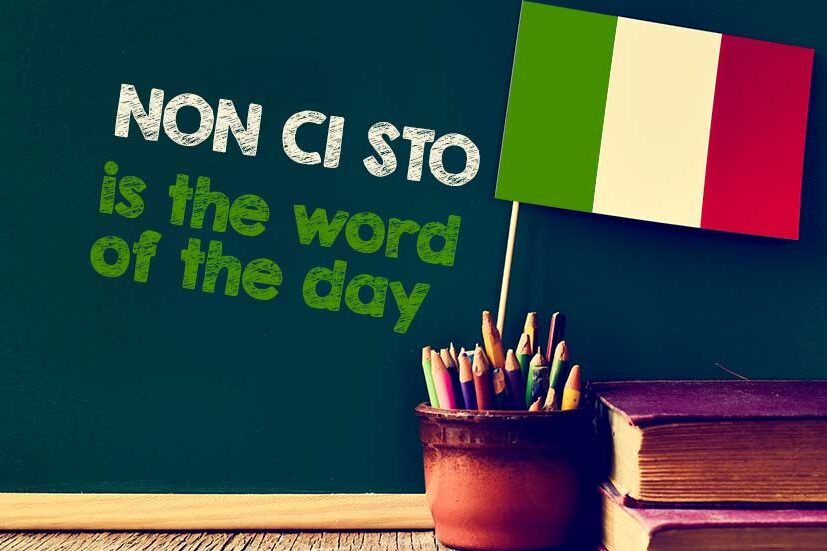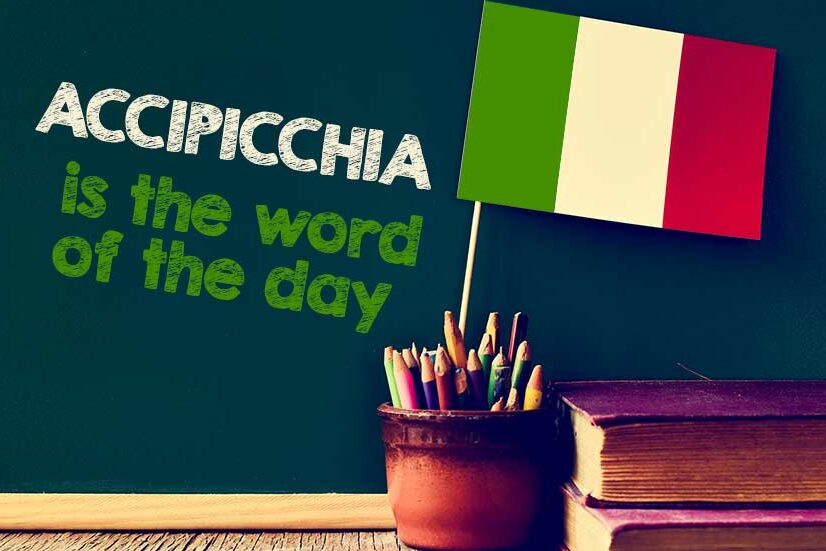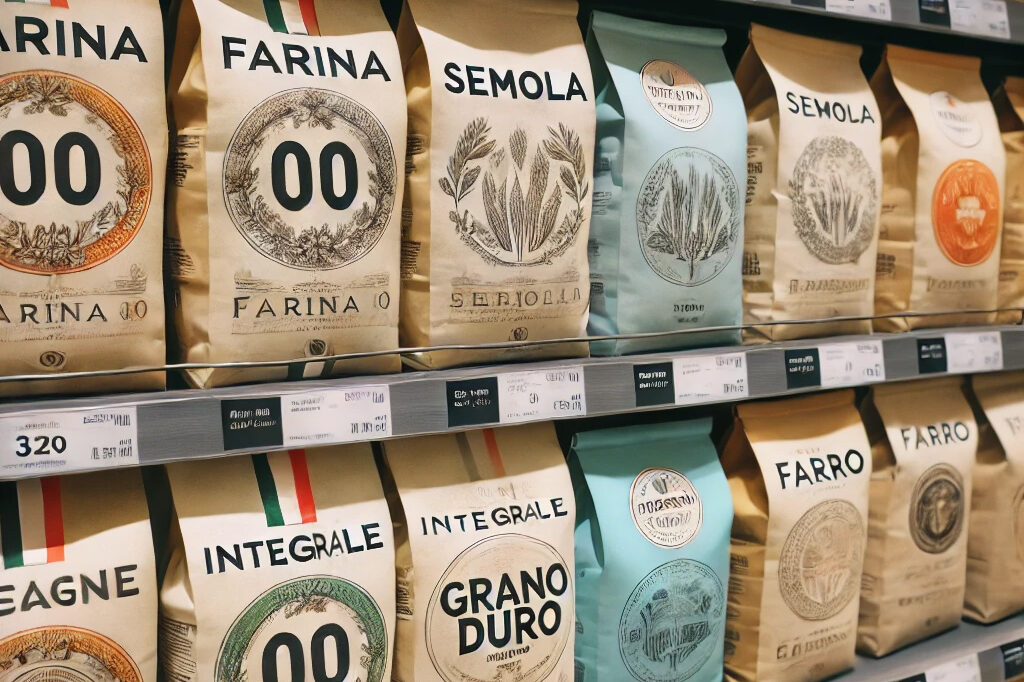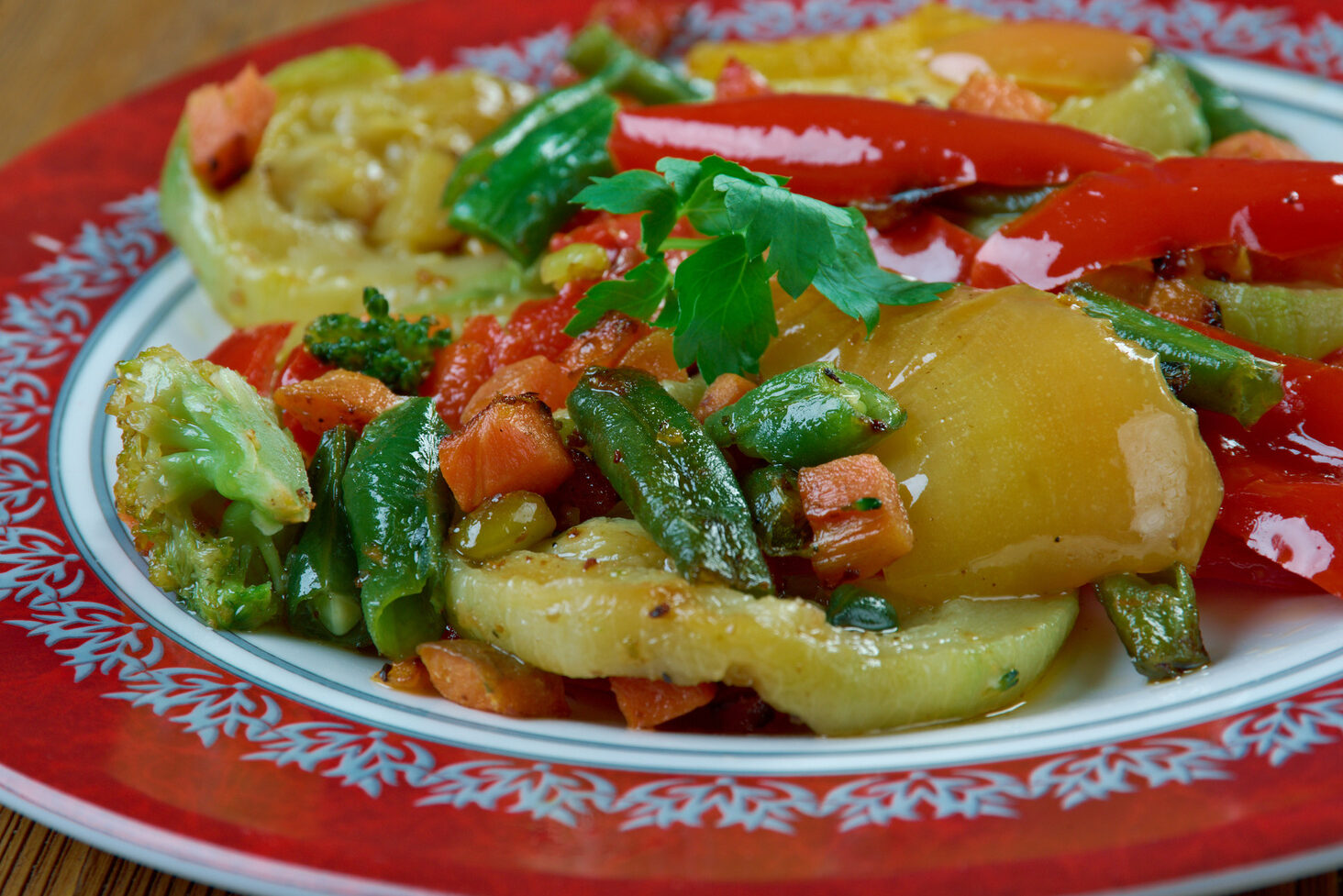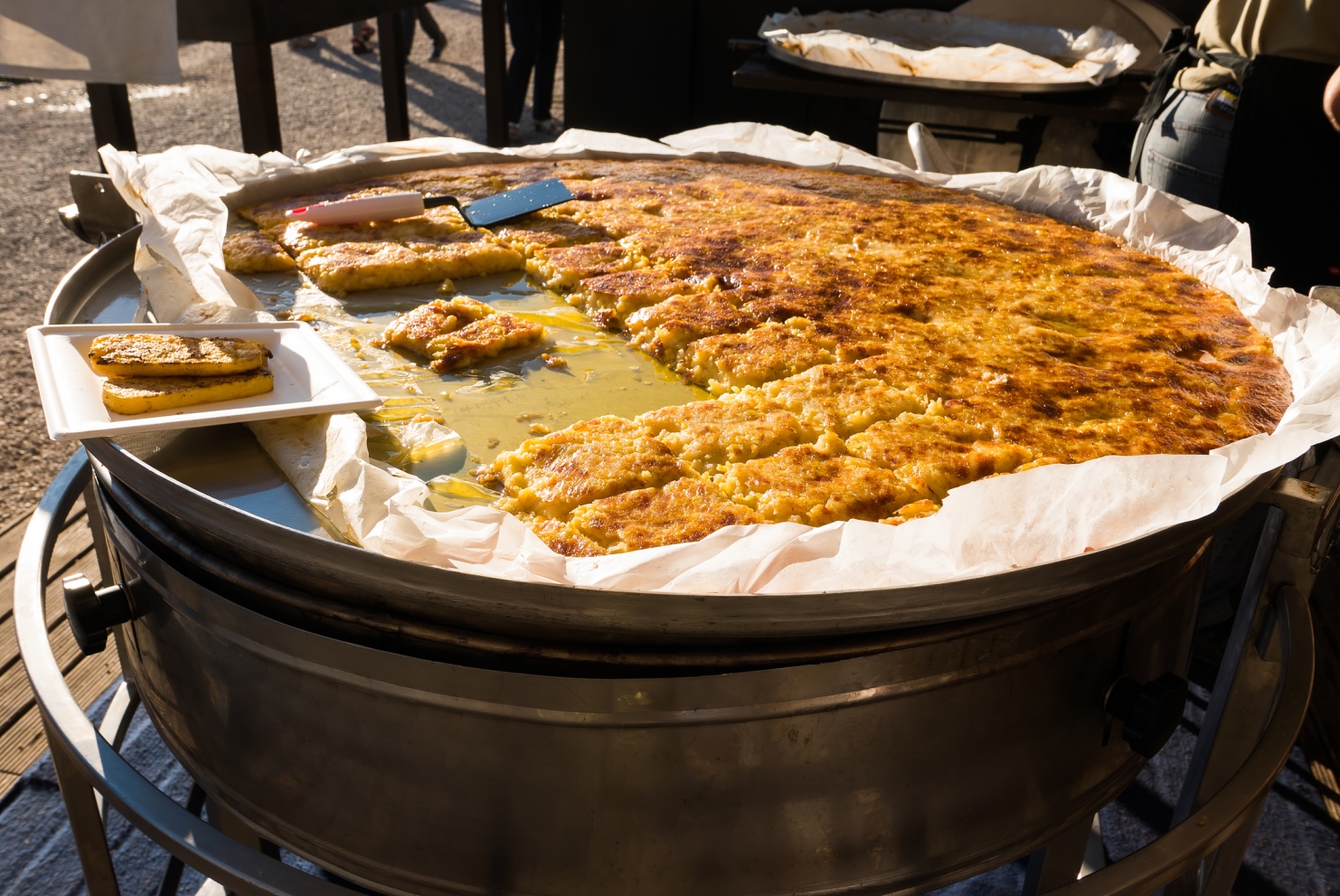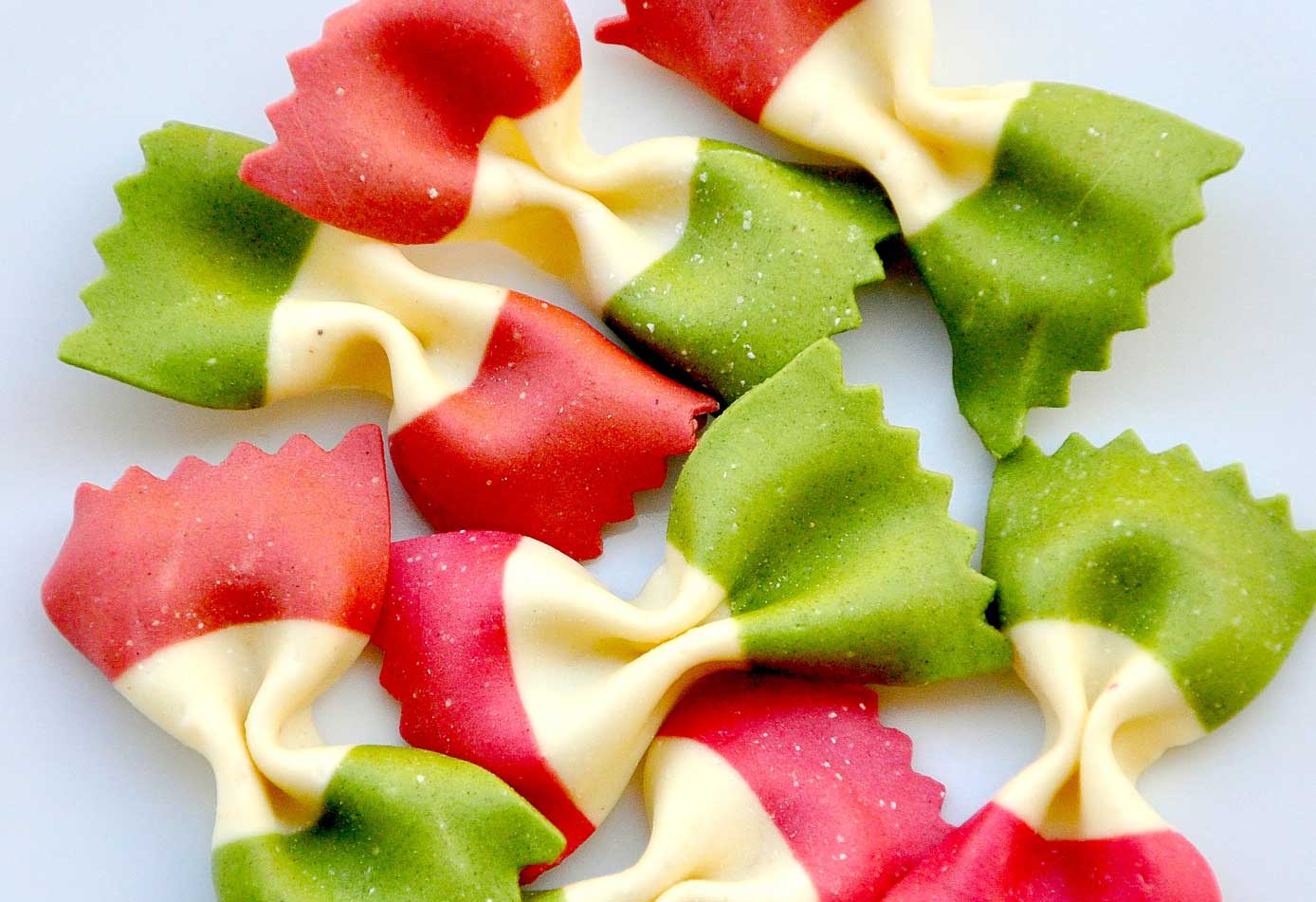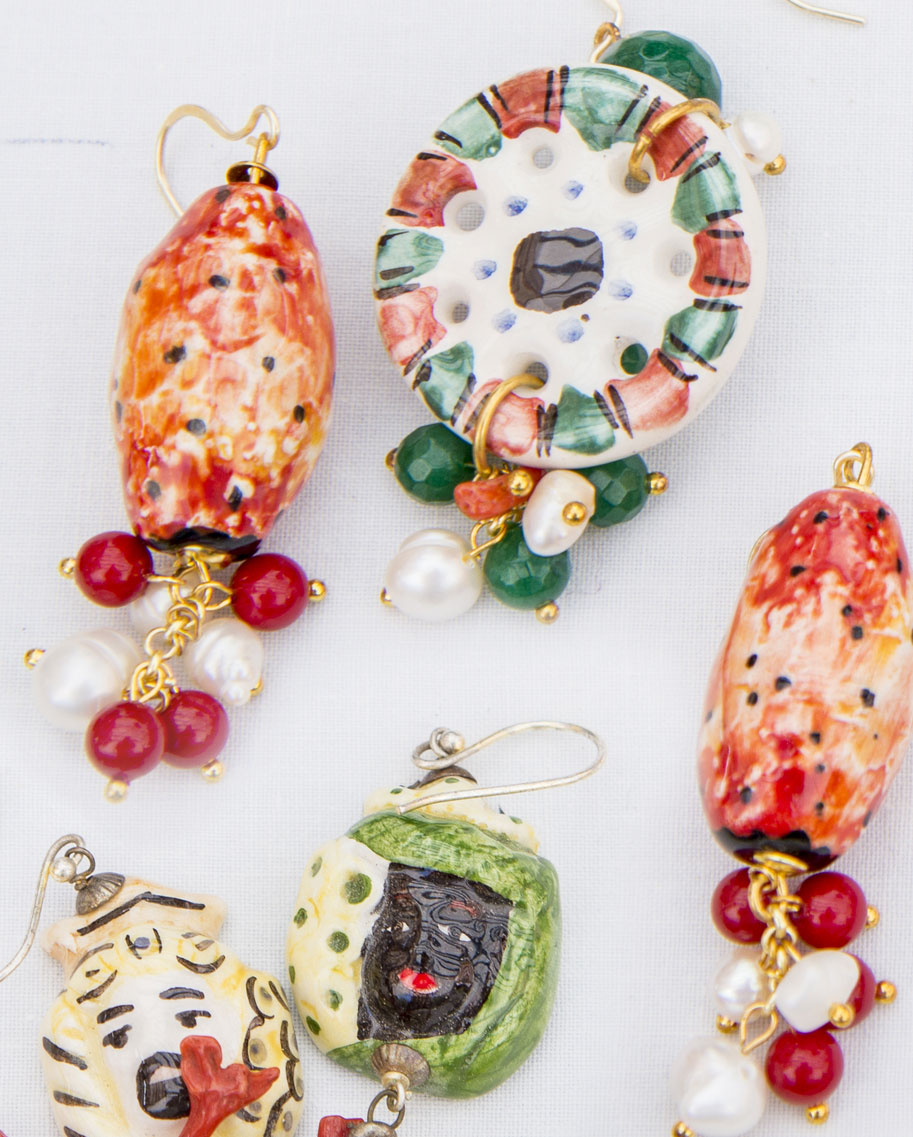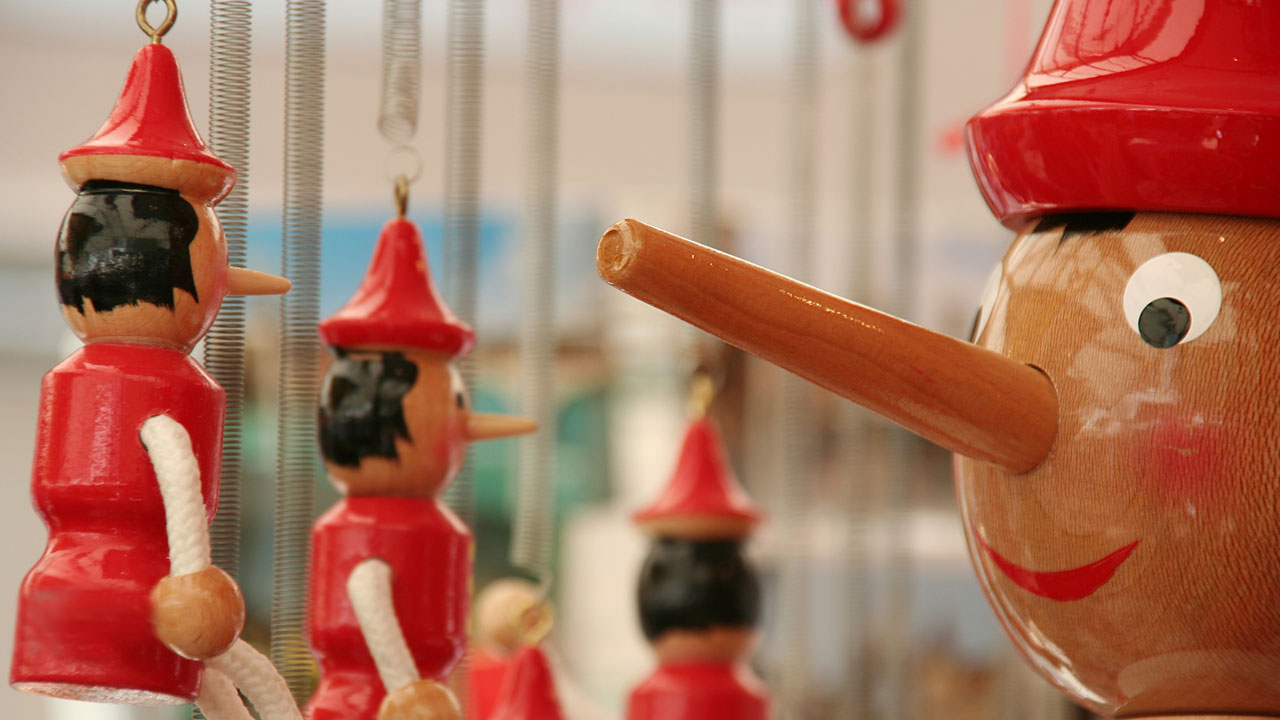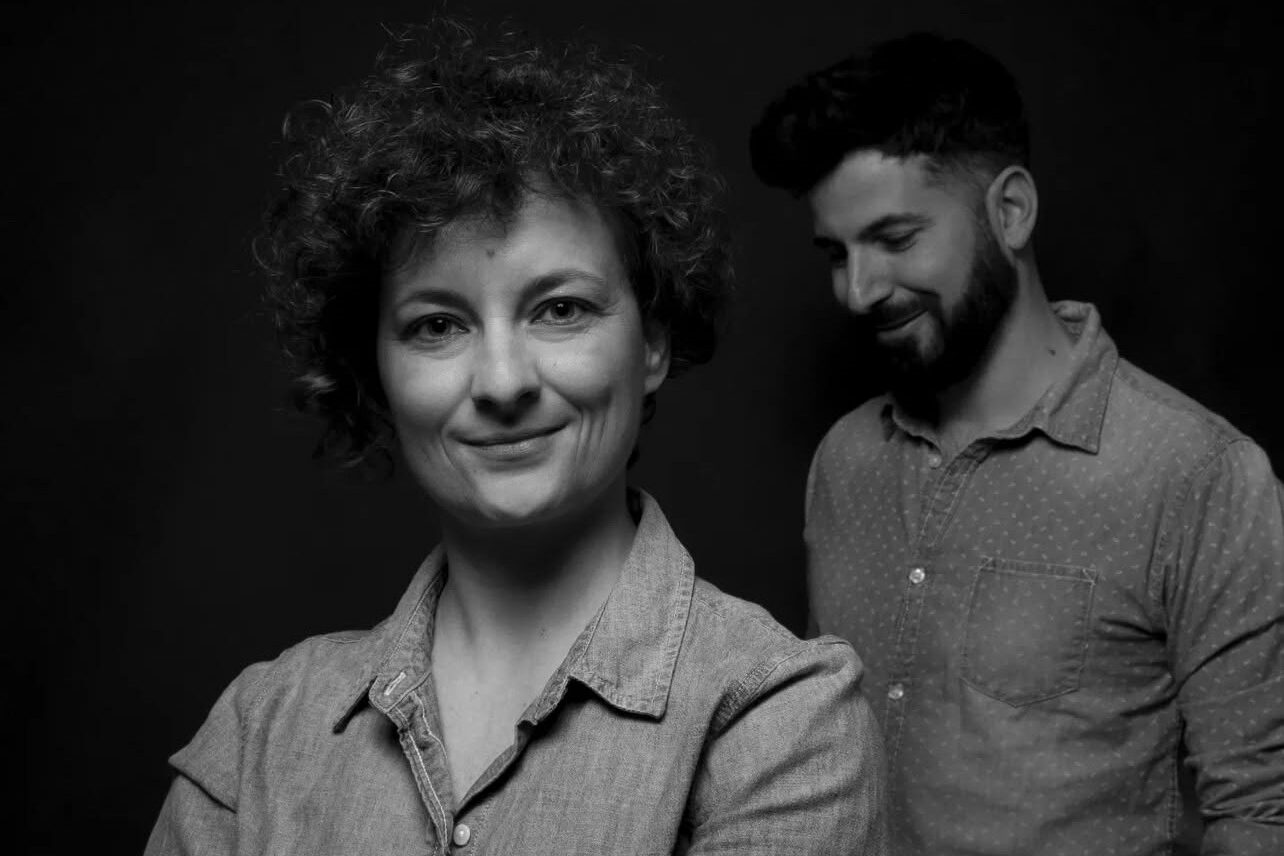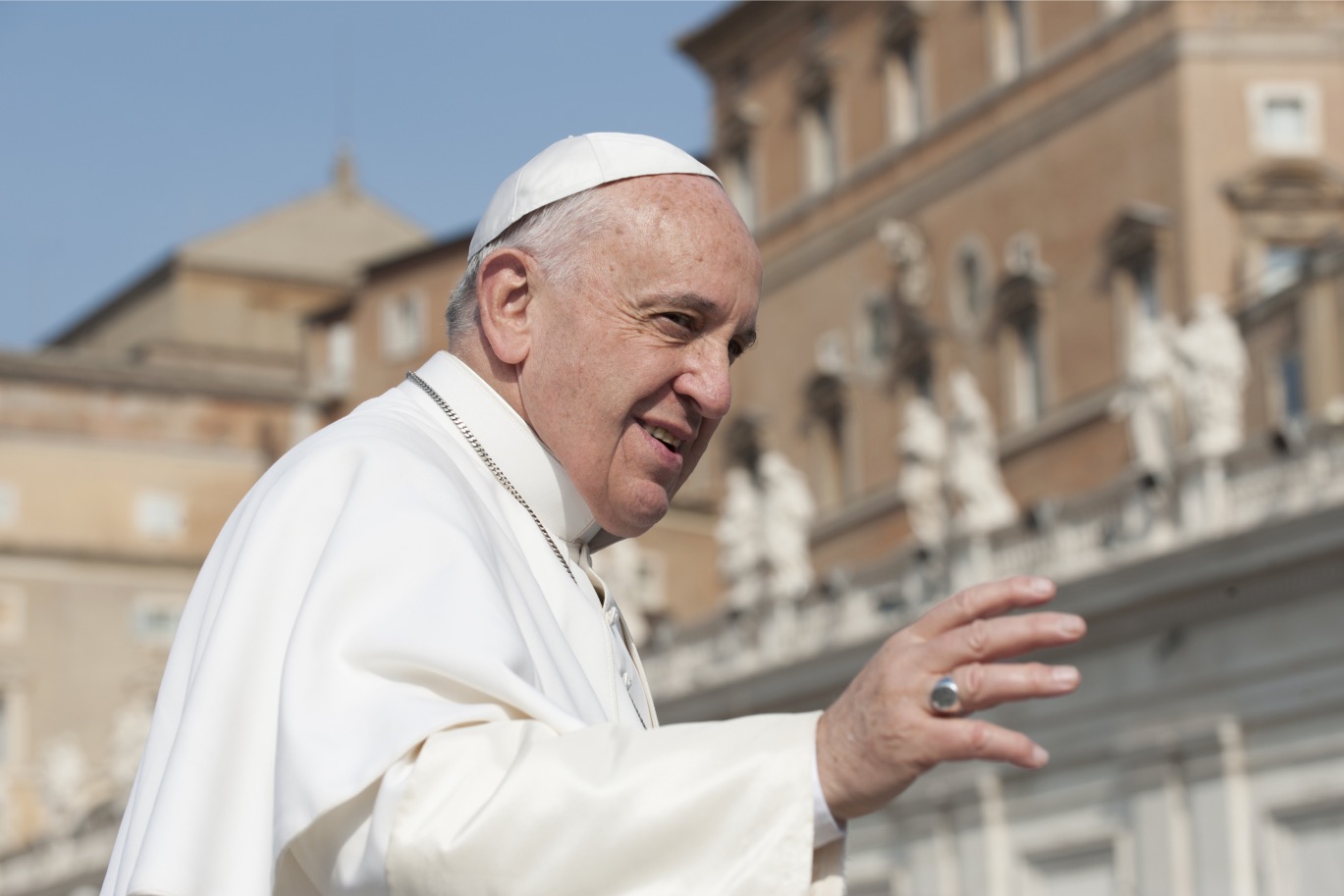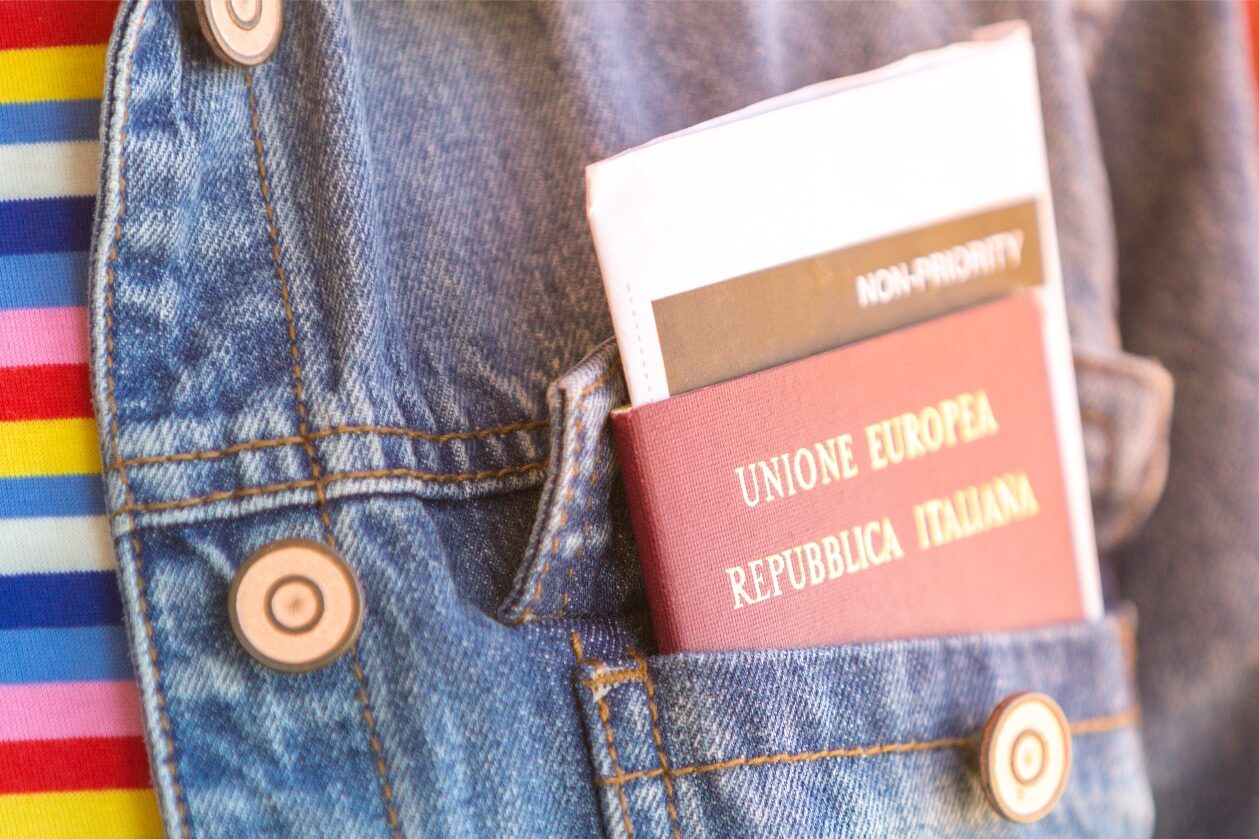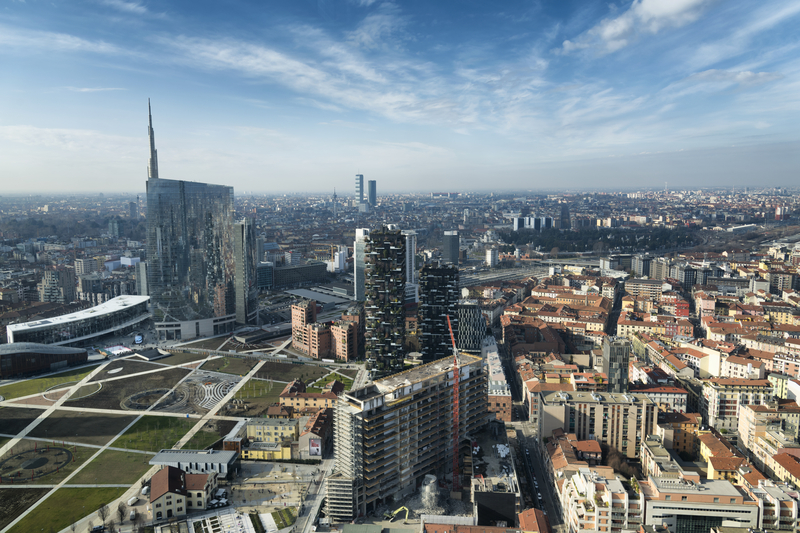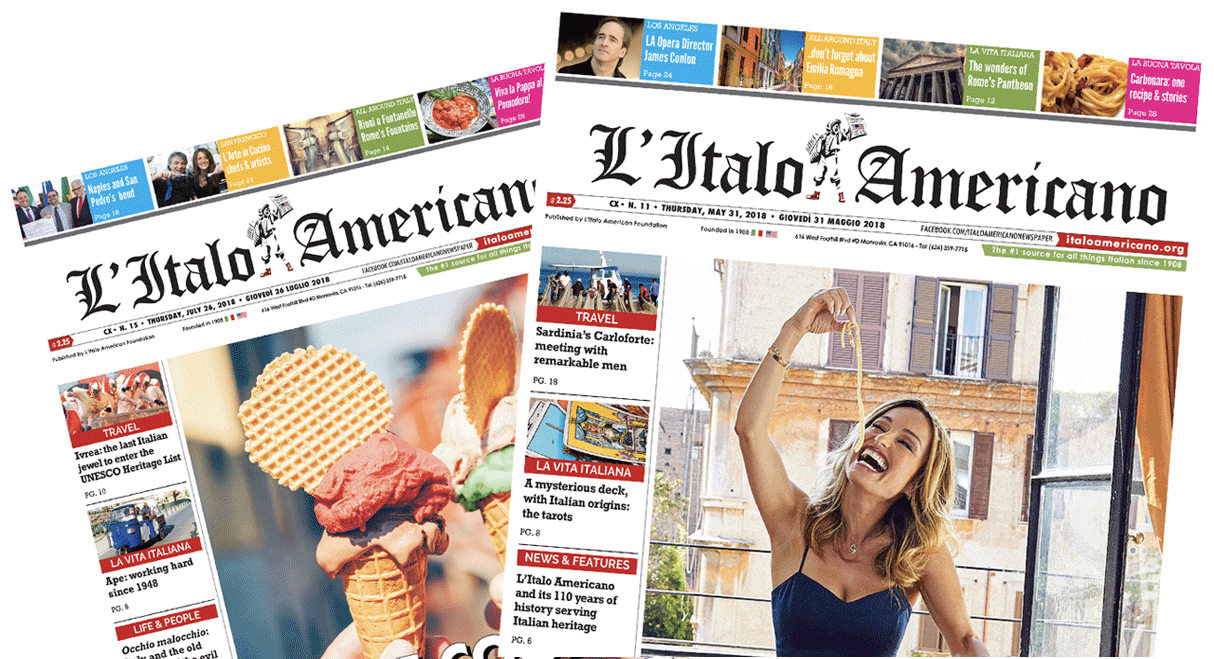Besides my group of co-pilgrims, there are many other similar groups currently walking at the same time on their cammini francescani. The initiative – promoted by Umbria, Marche, Toscana and Lazio regions – has these groups journeying along one of the following routes: Cammino di Francesco, Cammino di Benedetto, Via Francigena, Via Amerina, or Cammino Francescano della Marca. L’Italo-Americano, kindly invited by ItalySlowTour, is walking the Cammino Francescano della Marca rather than the originally planned Cammino di Francesco due to last minute logistical reasons. But no matter which road is taken in the end, all cammini are beautiful in their own ways, and what is more important is that each one runs through Saint Francis’ native Assisi.

Courtyard of Castello Pallotta, Calarola
Our trail normally takes eight days on foot, but we are doing it in three and a half days with the help of a bus, making up some distances we otherwise would have walked. In addition, we are going from Ascoli to Assisi rather than the other way round: thus, we can pass through Assisi and arrive in Rome after converging with all the other groups in La Storta, a rural area surrounding the Eternal City. This means that soon all pilgrims will be together on their way to Rome to attend the Papal audience: though dispersed for now, on Wednesday we will be reunited on our shared journey.

Courtyard garden of Castello Pallotta, Caldarola
As for me and my fellow pilgrims, this morning we have the opportunity to visit Pievefavera, in the comune of Caldarola. All is silent, and the town still sleepy, as we climb the steep hill to the magnificent Castello Pallotta, one of the main landmarks in this area of Le Marche. Originally a military castle, in the 15th century the building was turned into a summer residence and guest house by Cardinal Evangelista Pallotta and was then lived in as a home until the mid 20th century: as a result, the castle has the spirit of a home rather than a museum, and this is precisely what makes it a beautifully conserved gem.

An antique breadbin, from the kitchen of Casello Pallotta,Caldarola
The candelabras hanging from the mahogany-beamed ceilings really impress me as we walk from room to room, past walls of deep greens and over terracotta flagstones. Every room seems to reveal a new treasure: one of them has its walls covered in painted coat-of-arms, while the room for gambling has plush mustard chaise lounges and matching walls. But the heart of the home is undoubtedly the kitchen, with its iron and wooden implements from the past, including an elaborate piece of furniture designed for keeping bread.
Looking out over the courtyard and archways, we are struck by the stunning beauty of the garden, which really has a romantic, fairytale-like feel to it. Of course, we linger there for as long as we can and rest for a while before heading back down to the municipio palace and civic tower. We are just catching our breath before the next walk, leading us to the Chiostro di San Francesco.
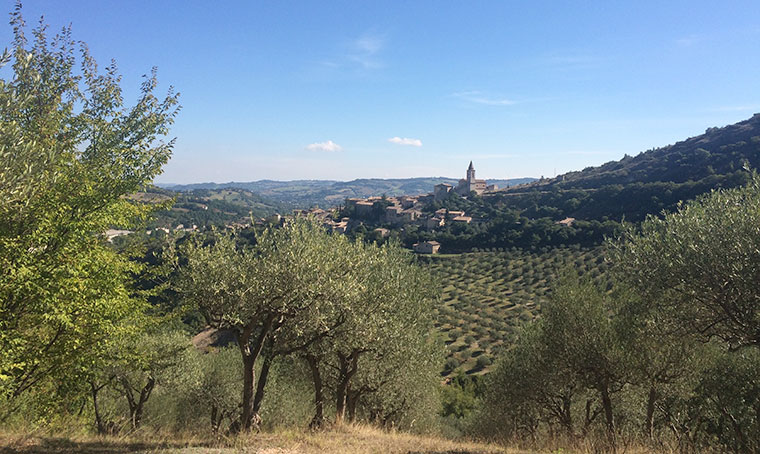
On our Cammino with Caldarola behind us
On our cammino, we soon discover that the terrain is more difficult than yesterday’s. This time, it is a rocky, stony road – a terreno sassoso – but at least the slim trees make a tunnel for us, keeping us in the shade. In the meanwhile, the brittle sounds of rocks underfoot remind us to attentively look where we put each step. Today we have a new guide joining us: Franco. He shows us the ciclamini flowers, which indicate the presence of oak trees and spaccasassi plants. We pass perfectly pruned olive groves growing in rows and see spider webs glisten on rosehip bushes in the dewy sun. Wild fennel, laurel, and the smell of wild mint perfume our pilgrimage.
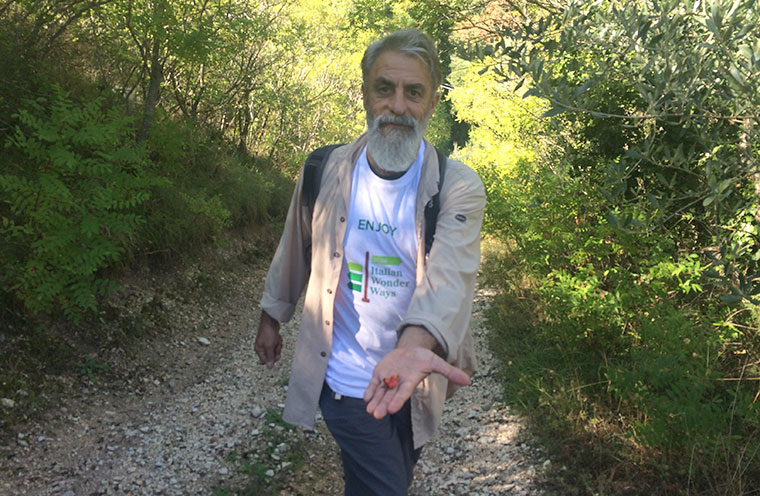
Franco holding rosehips from the Pievefavera hills
It is hard to imagine Saint Francis walking these paths barefoot, as meant by his vow of absolute poverty (povertà assoluta). It is hard enough to stay upright walking with sturdy shoes on, let alone without shoes! Franco explains how revolutionary this vow would have been at a time of great corruption within the church, and recalls the expression “un uomo nudo non può essere spogliato” (“a naked man cannot be undressed”). Eventually the stones give way to moss and grass so we can walk steady, which provides a happy relief.
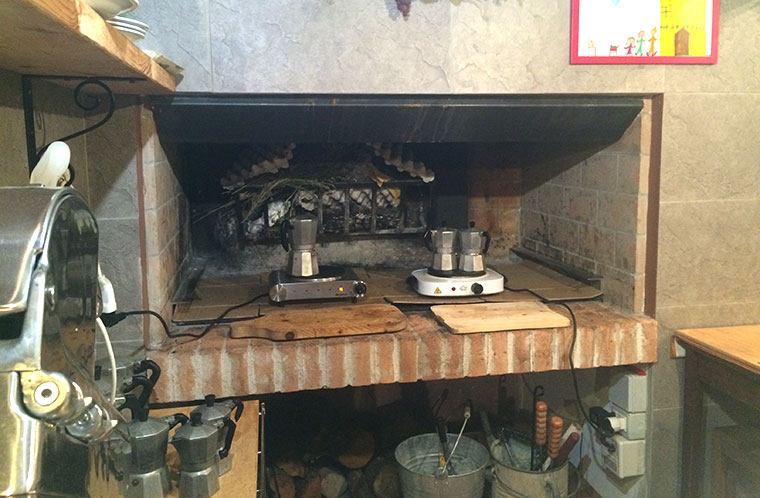
Coffee made from piastre, at the rustic osteria in Colfiorito
We reach the convent of San Francesco in Pieve Bovigliana, a monastery founded by the saint himself. There is a true feeling of peace here – it feels like prayers have been prayed into the walls. Lunch is provided by the local hotel and it is an absolute delight: first we have rabbit with lemon and wild fennel – fragrant and zesty, it is served with salad; then, we savor each bite of cannelloni filled with a potato purée and ham. After lunch, we are given local digestifs with strong, licorice flavors.
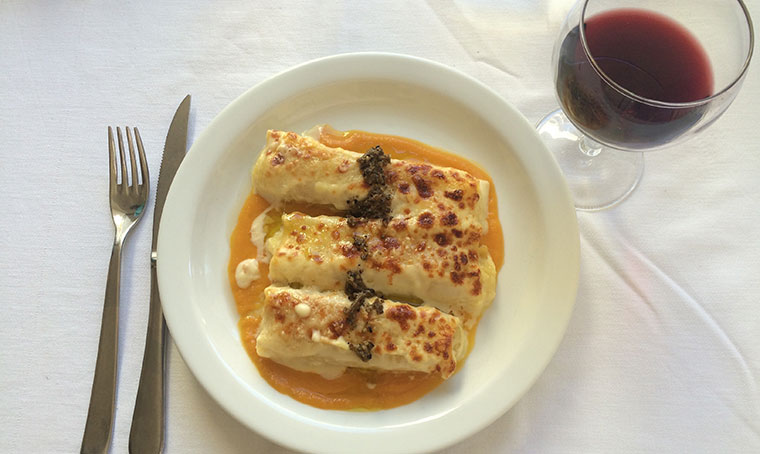
Cannelloni and wine in the Chiostro del Convento, Pieve-Bovigliana, where St-Francis stayed
Back on the road, at some point we stop to meet a man by the name of Fausto Barbone, who tells us how he uses his own water-mill to produce electricity. In the winter months, when the rainfall is high over here, he manages to sell electricity directly to Enel – the electricity board. We regain some strength by listening to Fausto’s interesting story, as well as to the running of the stream below us.
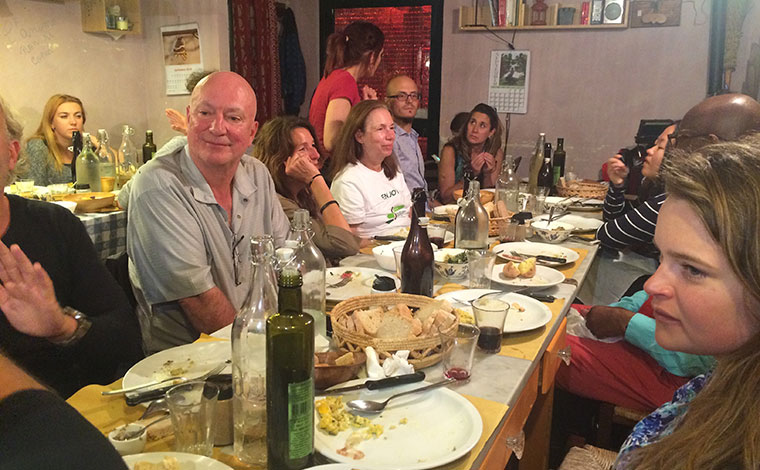
Feels like home in Stefano’s osteria in Colfiorito
Tired from our day, but invigorated by all we have seen and experienced together, we finally arrive at Colfiorito, our first step in Umbria. At a local osteria, we can totally relax from our busy day of walking: just like in Caldarola, there is a feeling of home here. Stefano, the owner, welcomes us into a room in the back of the restaurant, where we are served by the family itself. There are no airs or graces here, it simply feels like we have been invited into somebody’s kitchen to share with them what they have lovingly prepared for us.
Before turning in, our wonderful guides – Luciano and Maurizio – surprise us with a concert of Celtic music: the former serenades us on Irish harp and guitar, the latter on the pipes and flute. It appears that there are strong, regional Gallic influences in the area, hence the Montelago Celtic Festival which takes place in this town annually. The two guides play with every inch of their souls and make music sweet enough to bring out the faeries of the Apennine Mountains.
Going to bed full of pappardelle topped with freshly shaved truffle, the lullabies of Celtic music still resound in our ears. It is with a feeling of peace and serenity I bid you goodnight.
